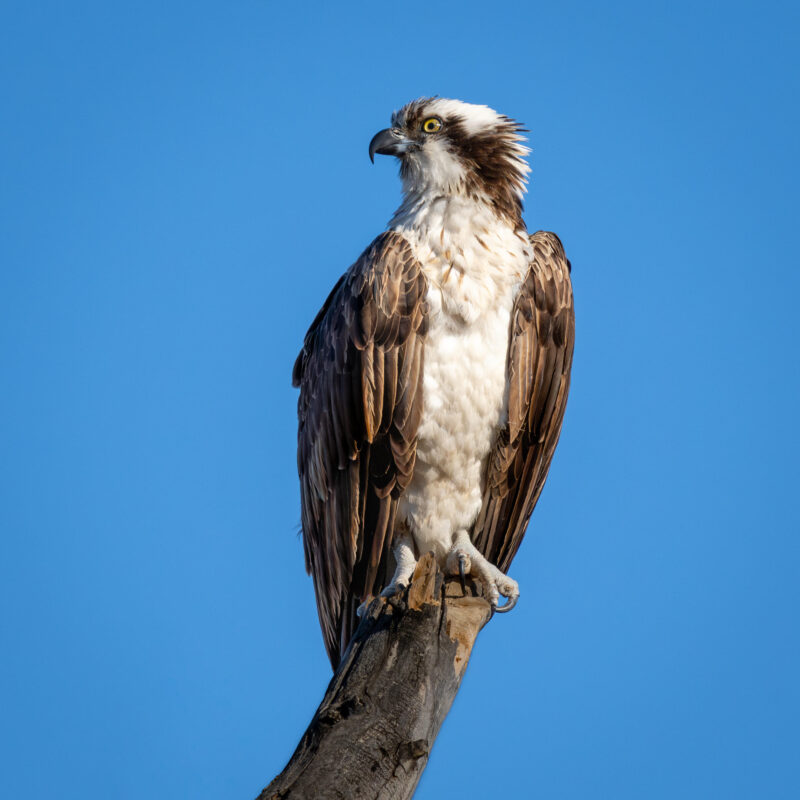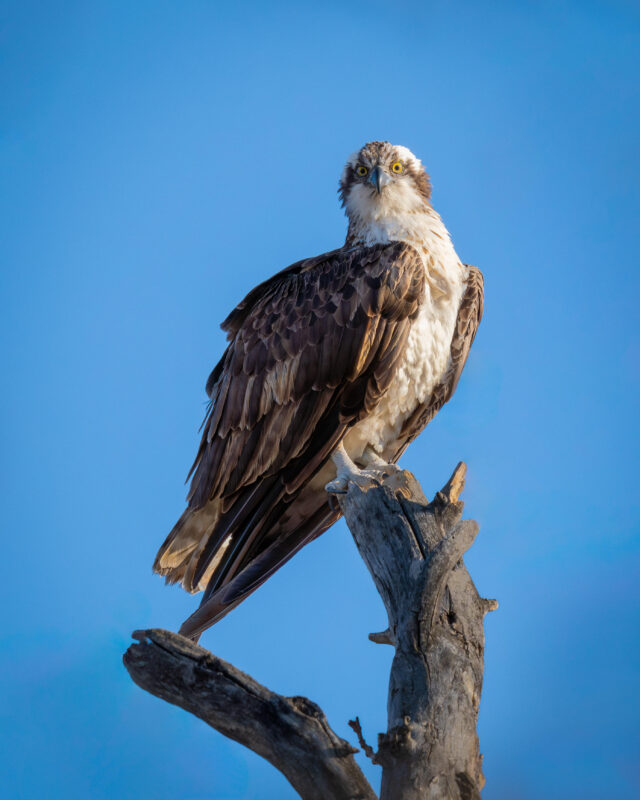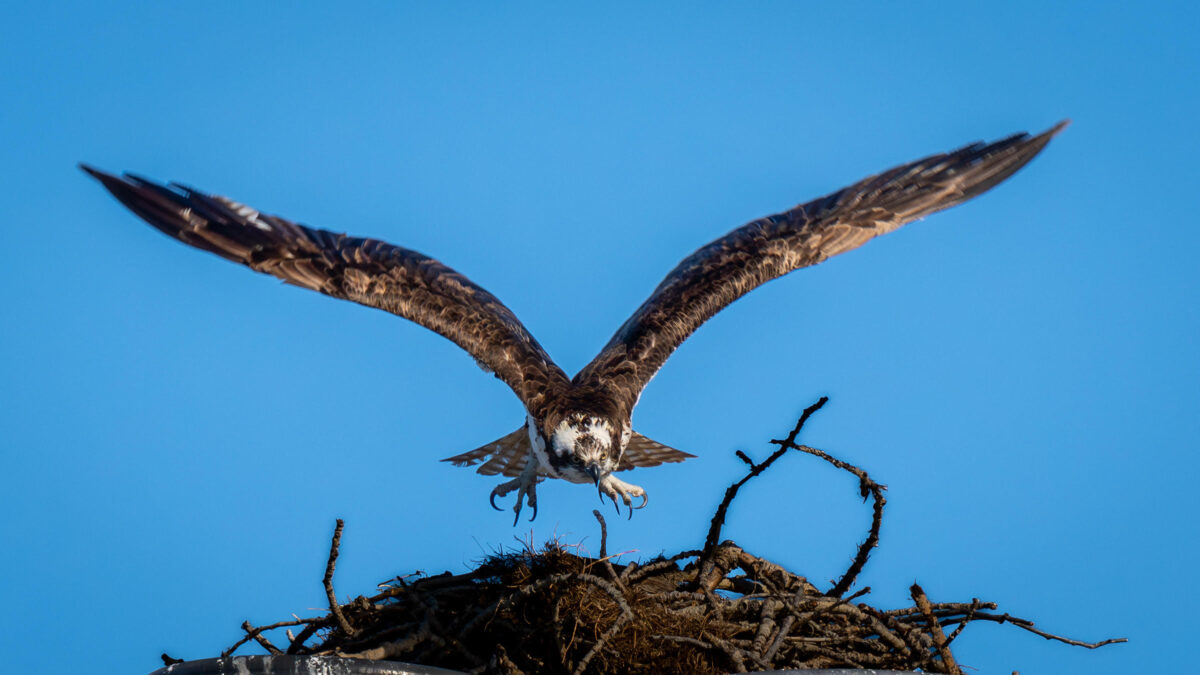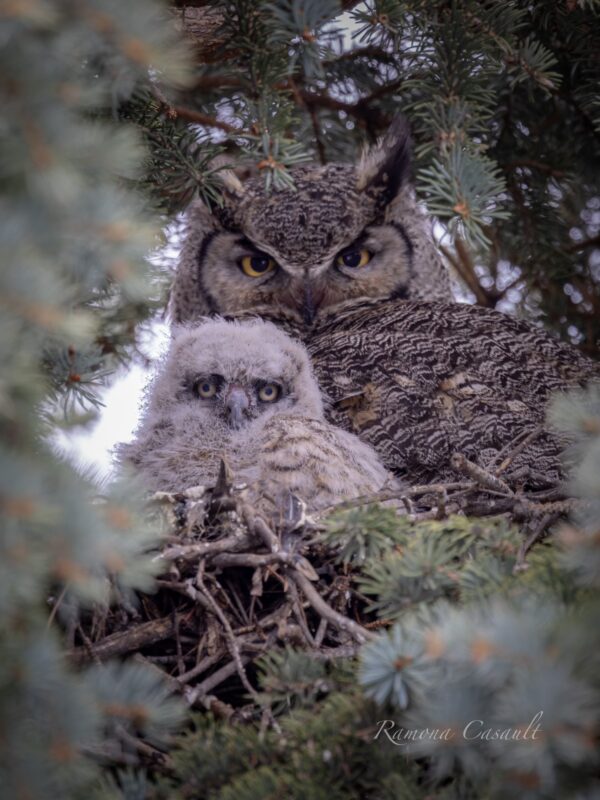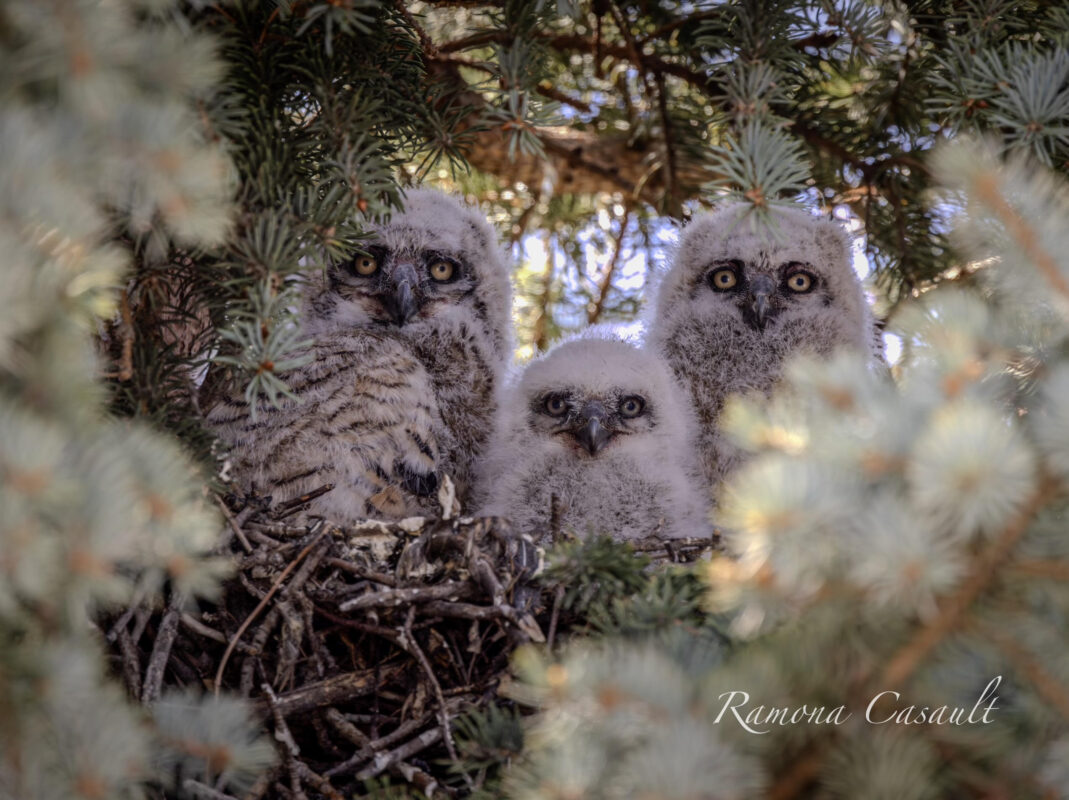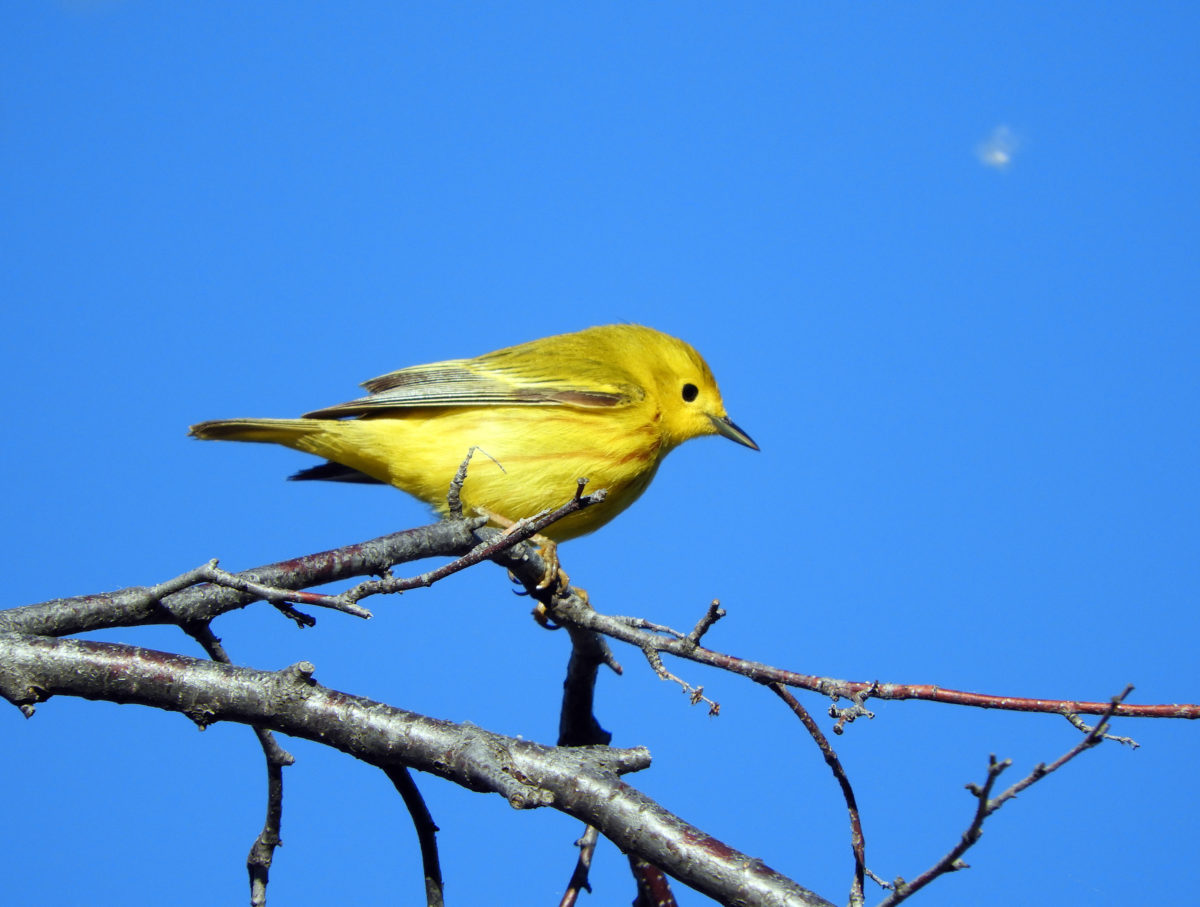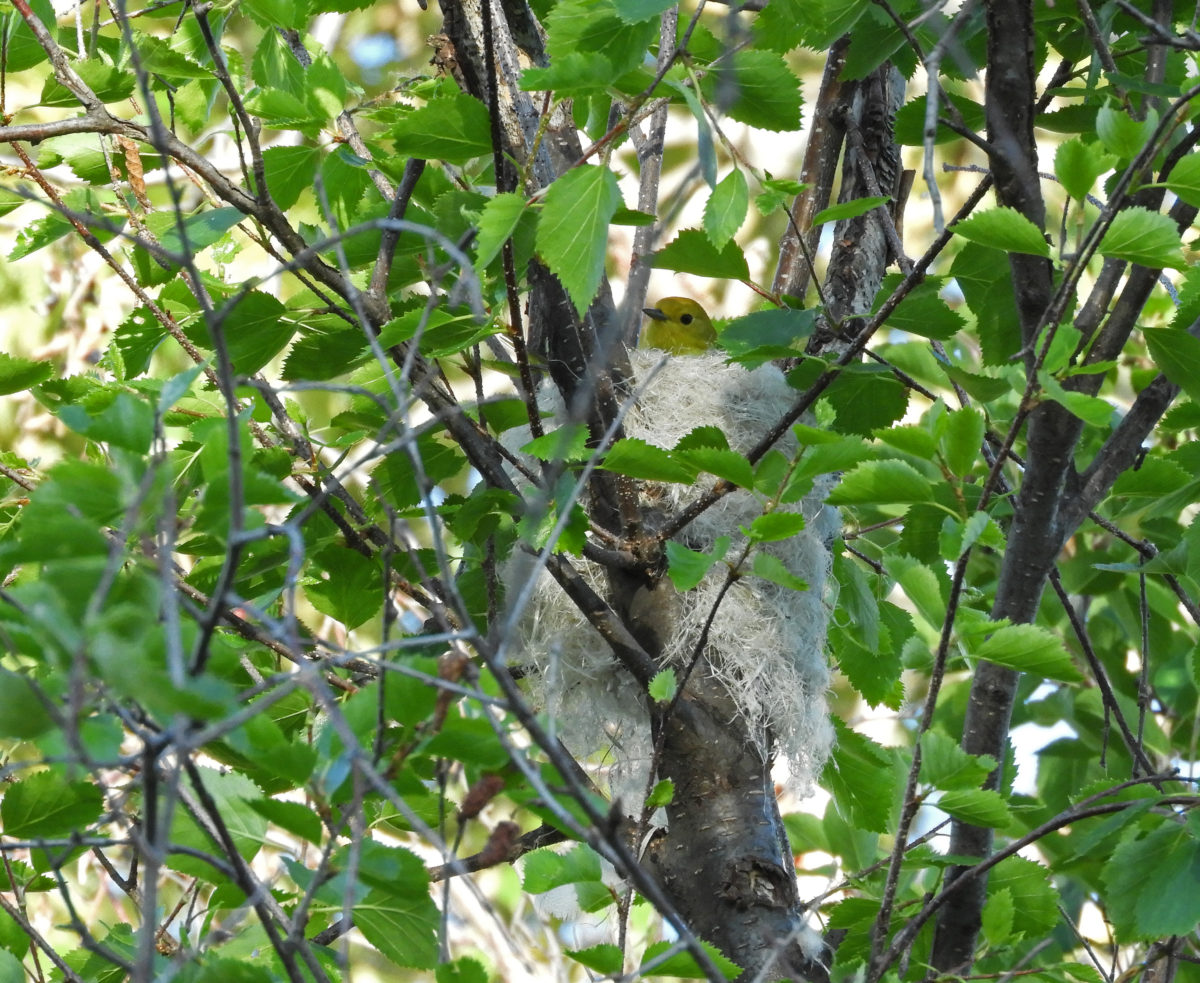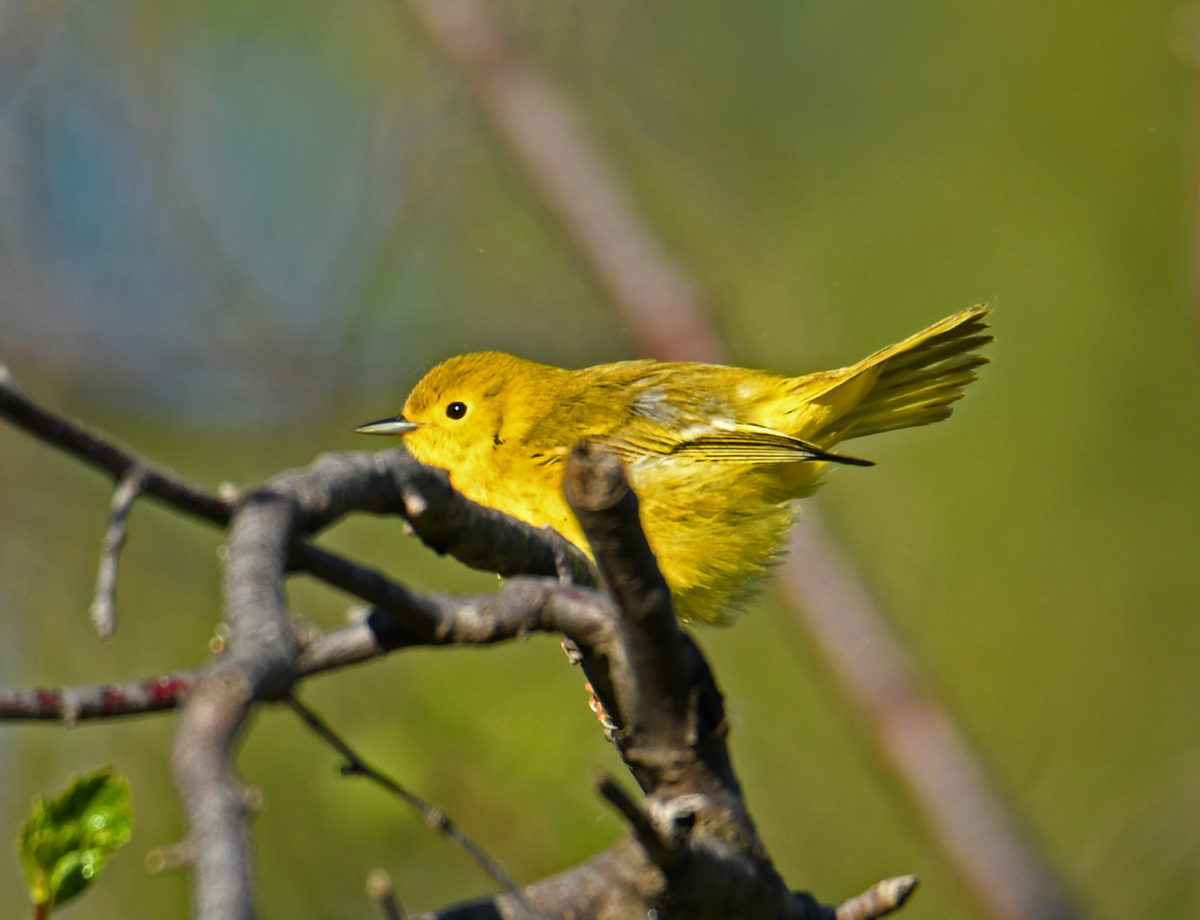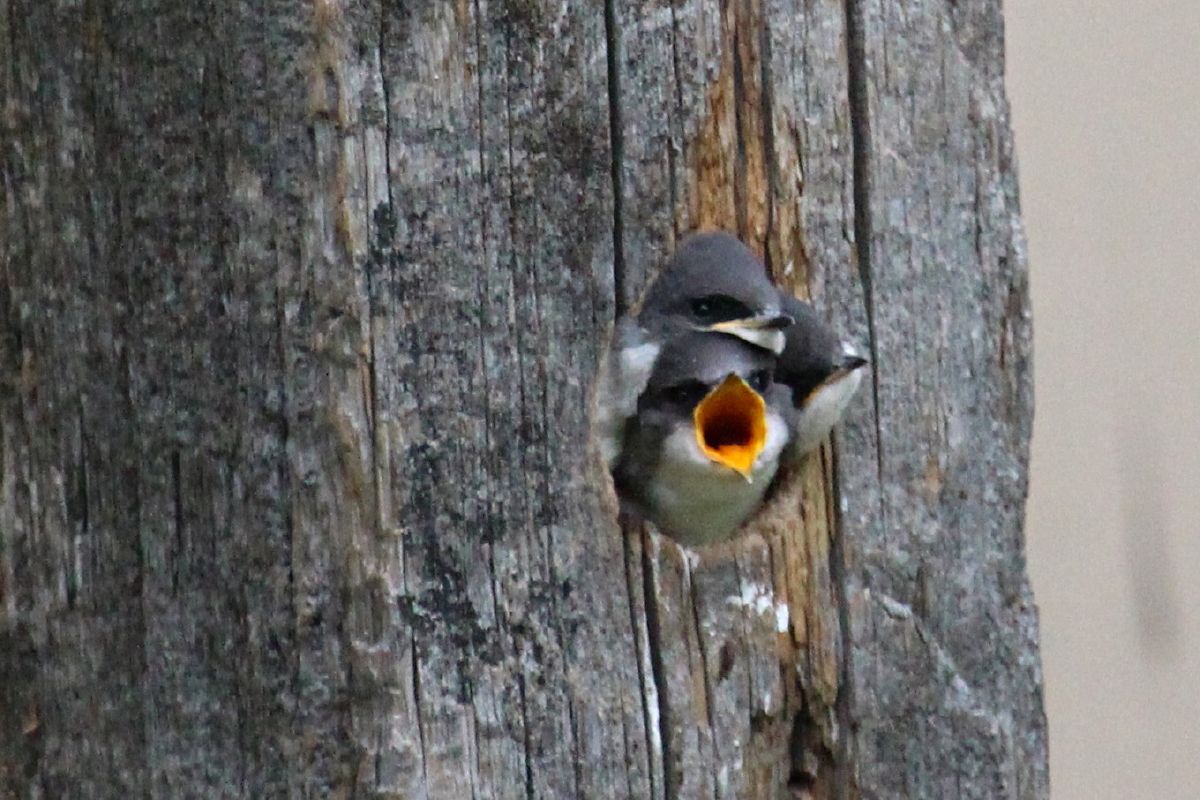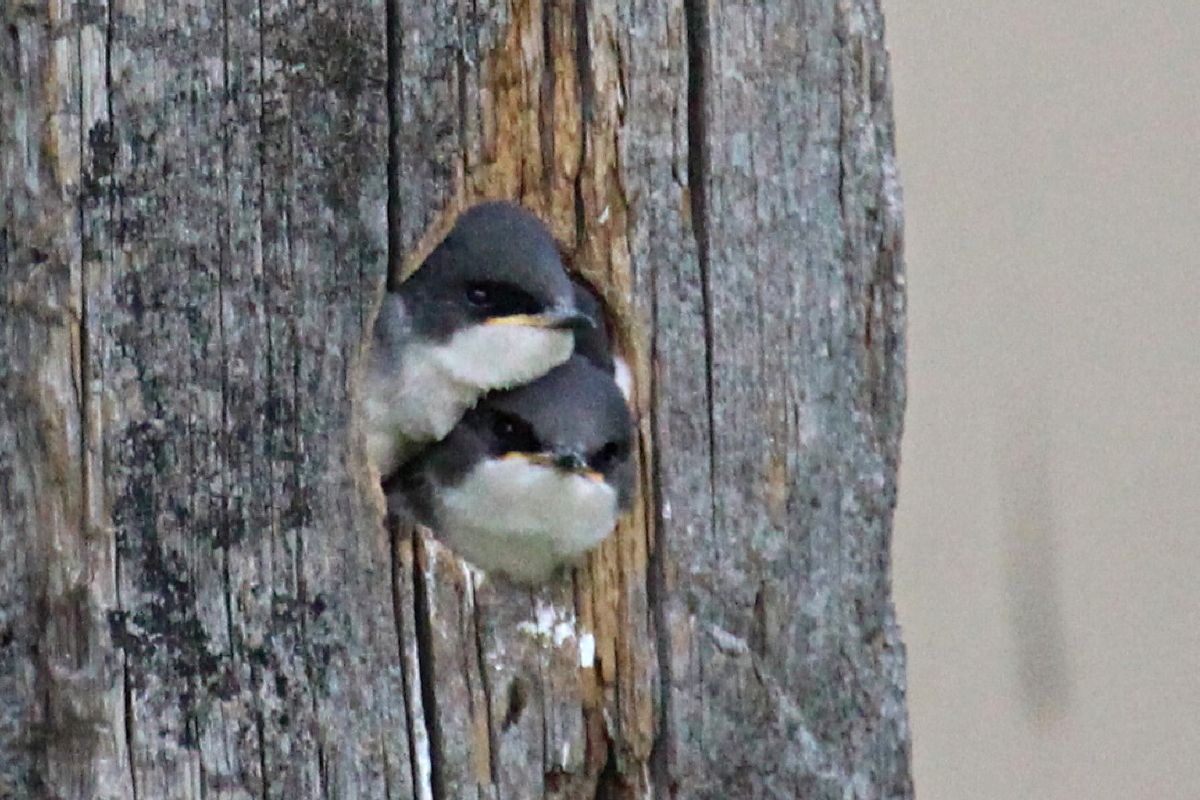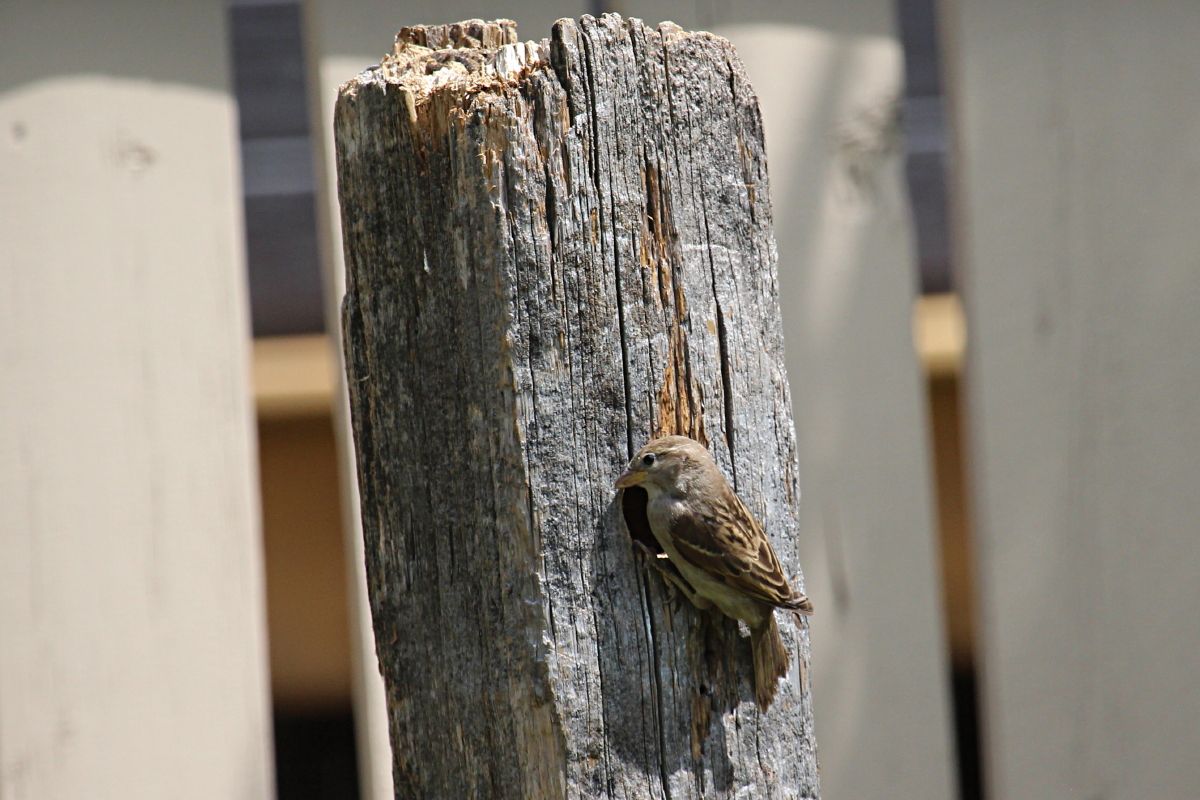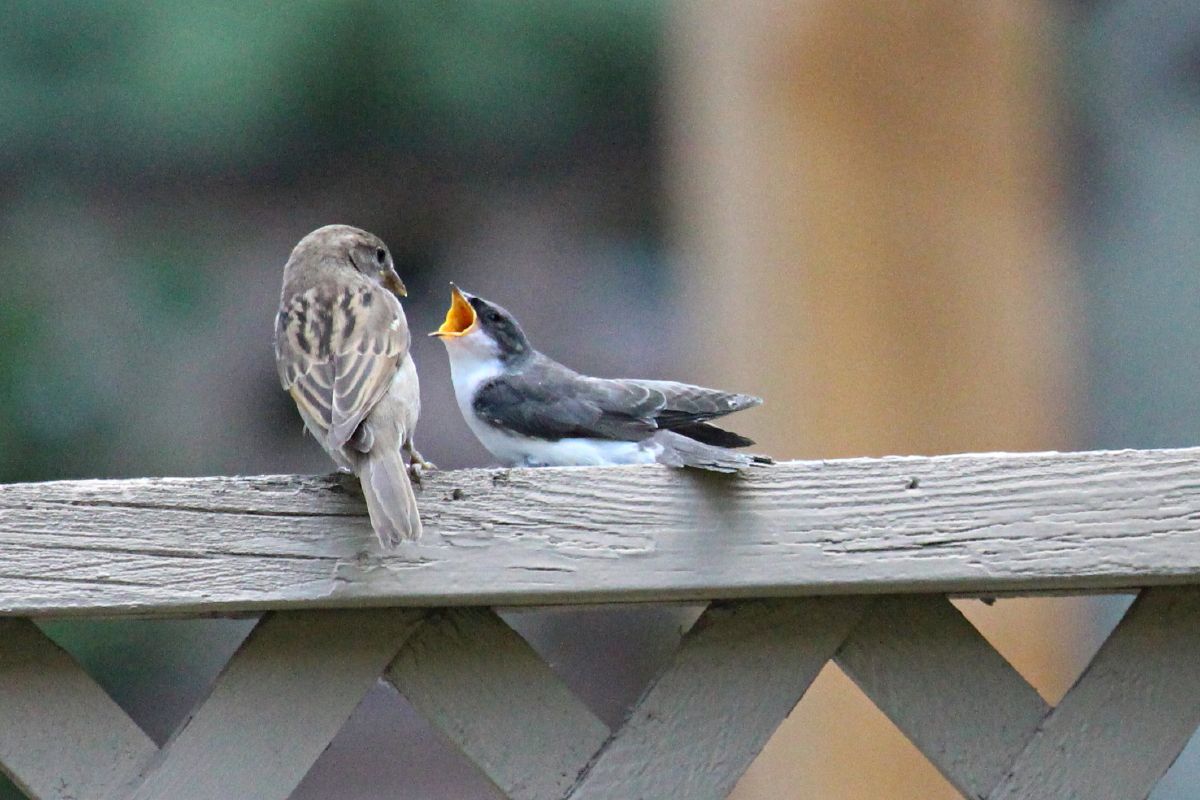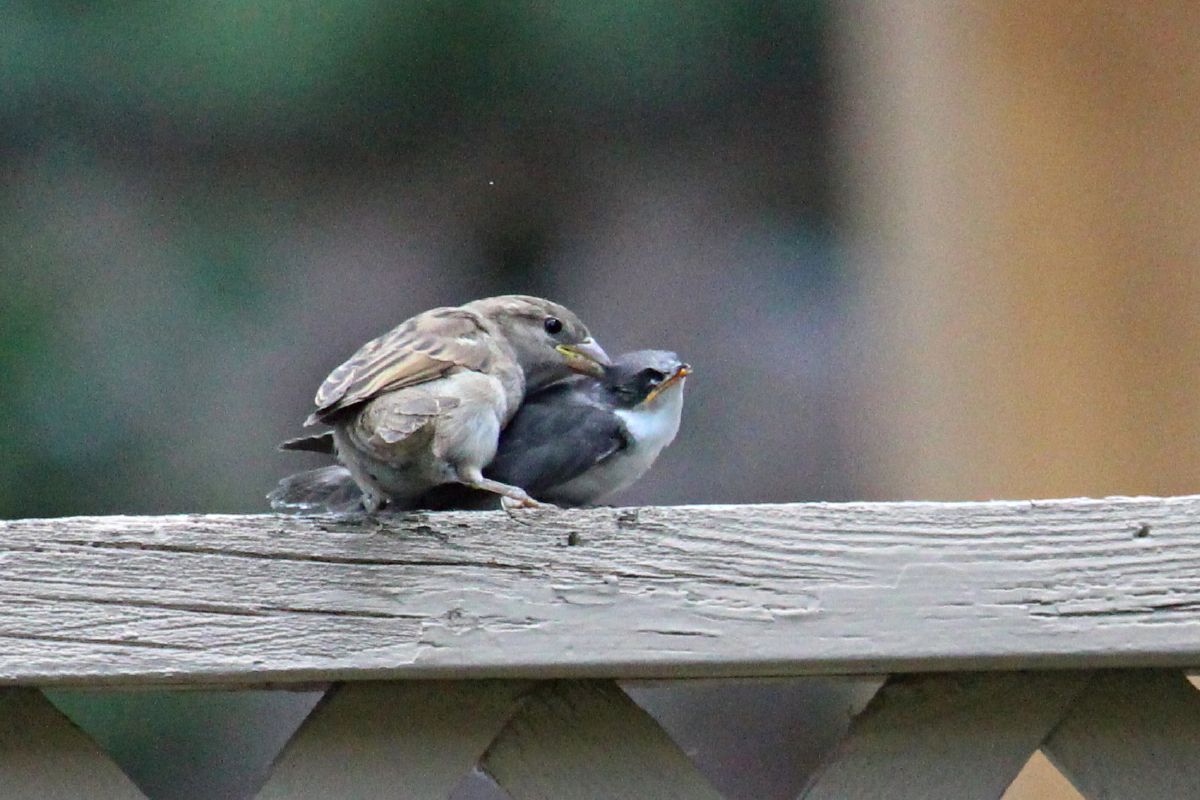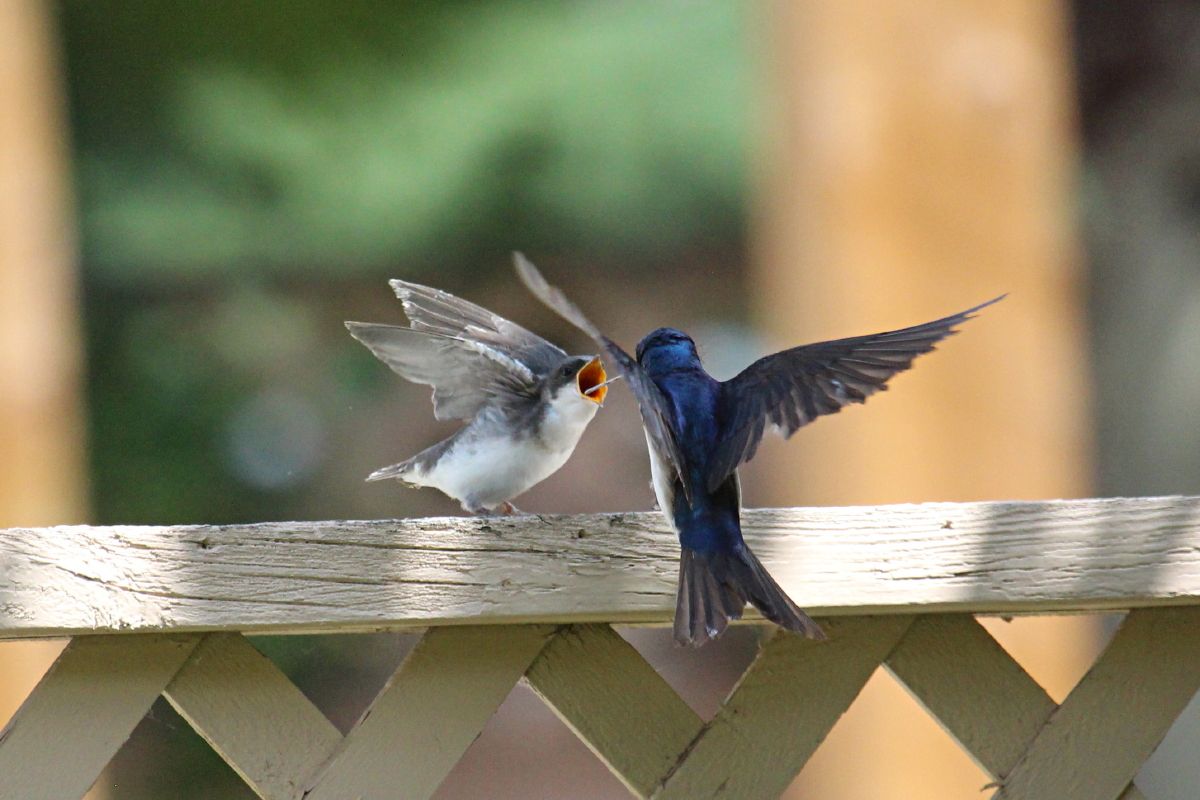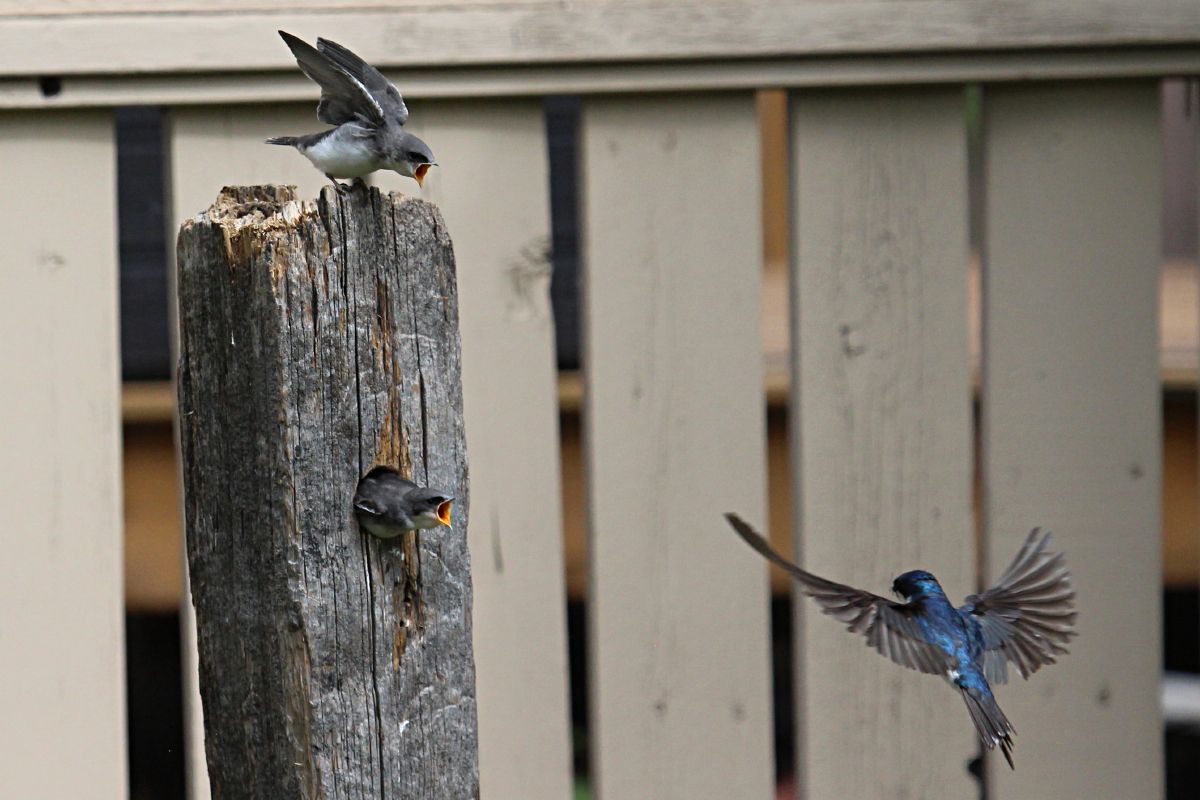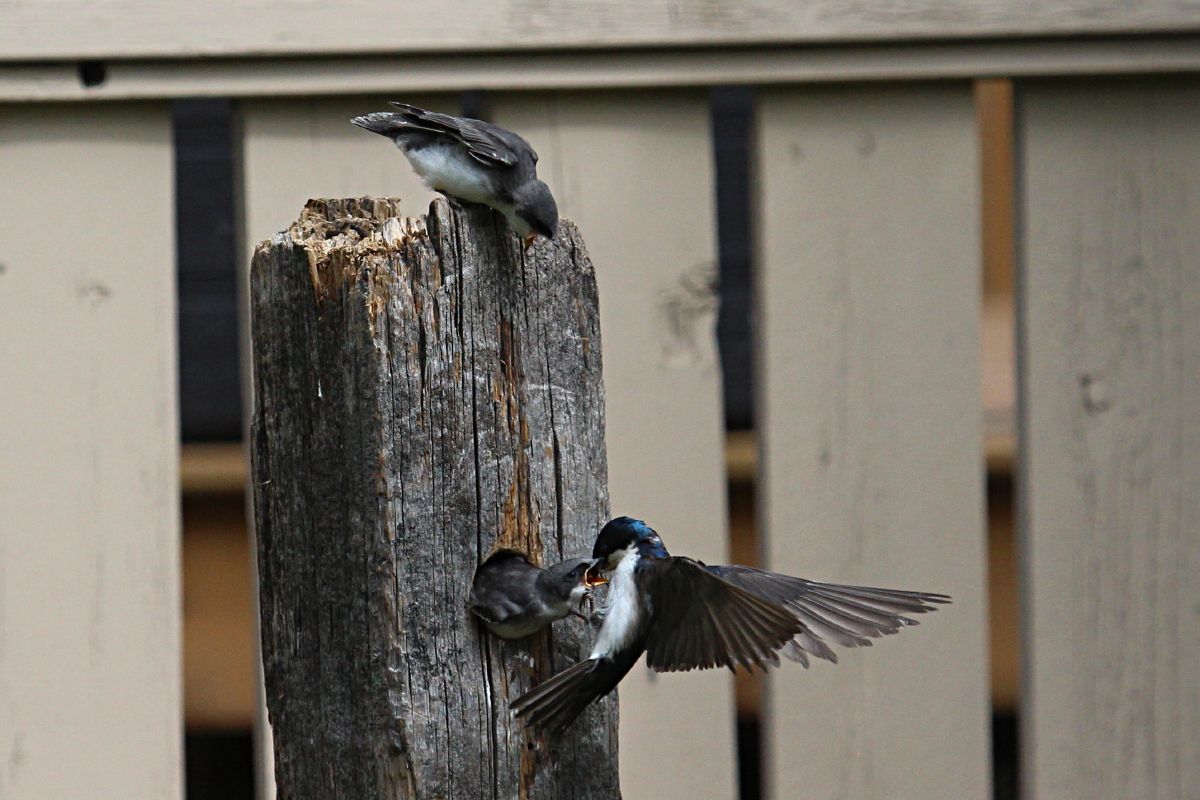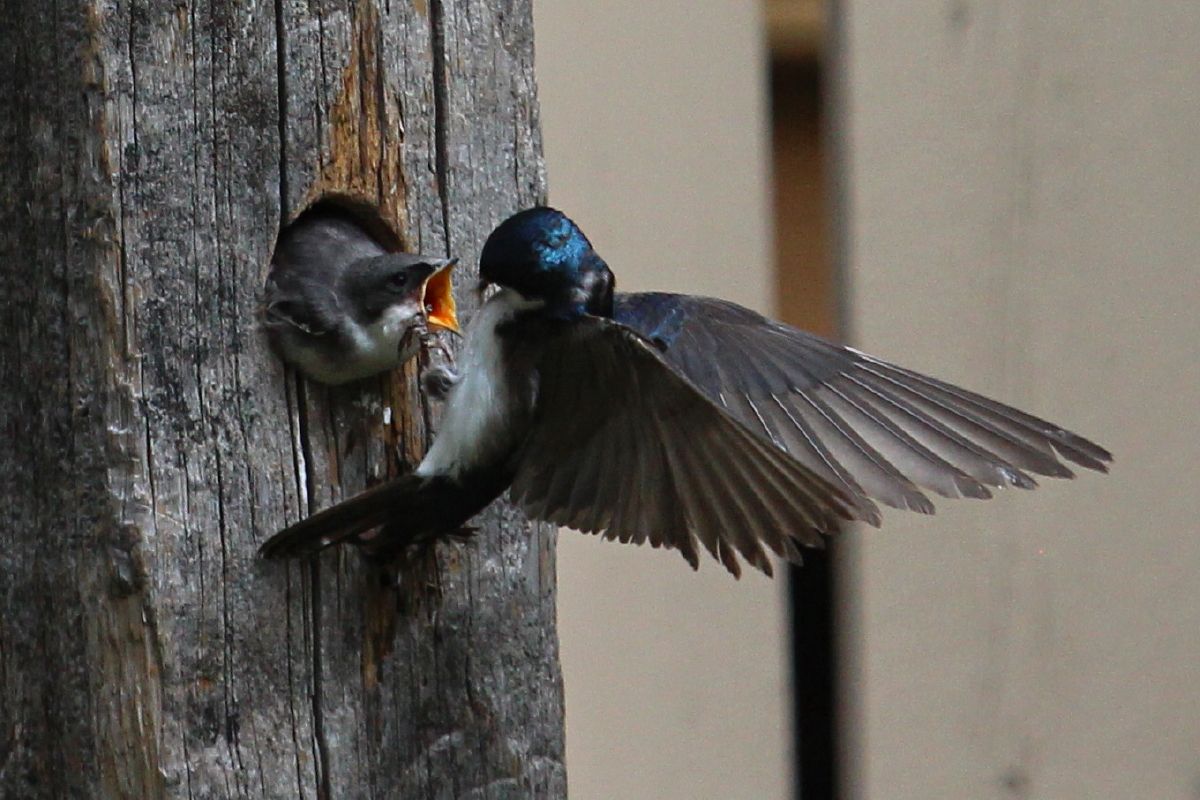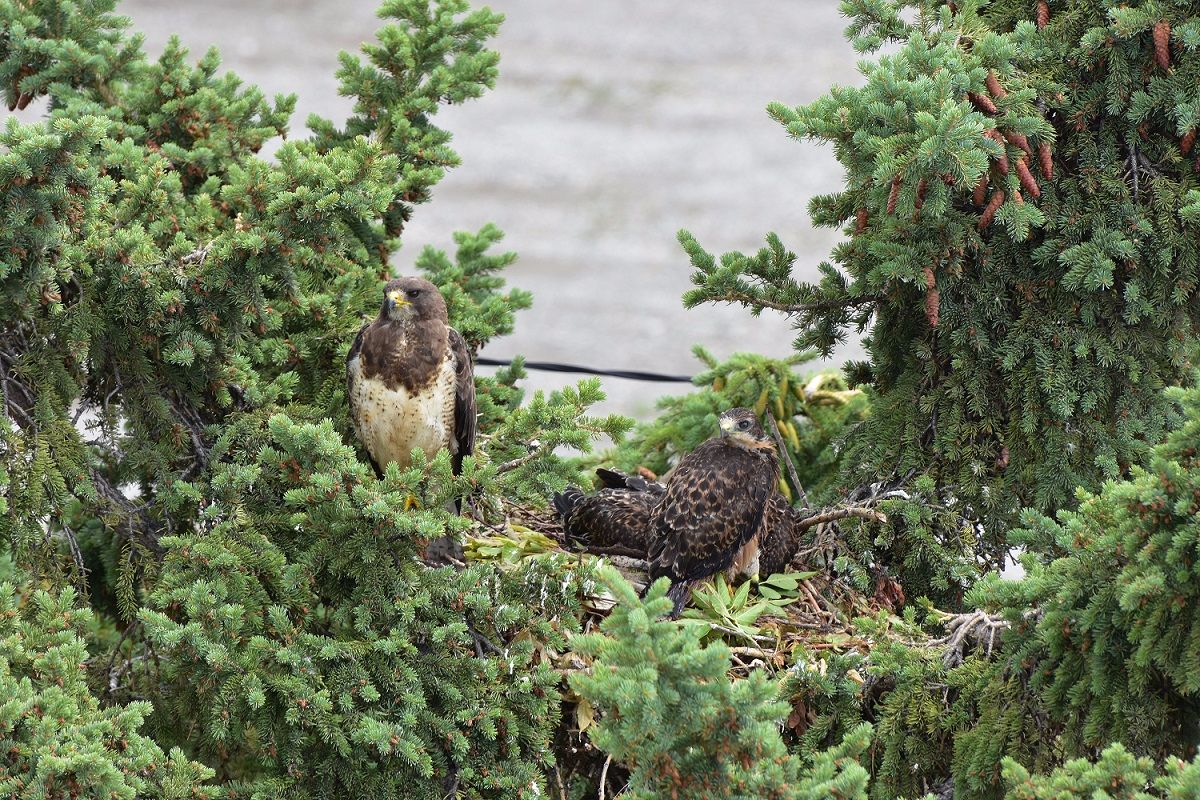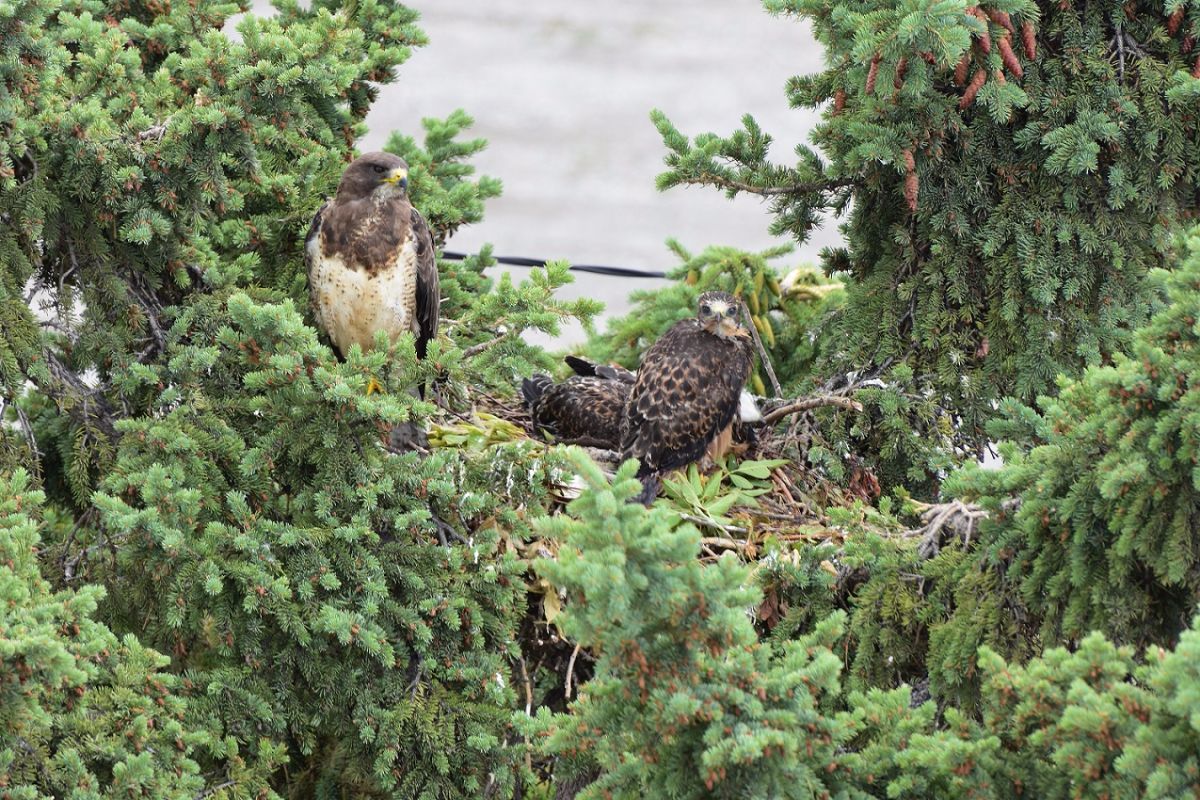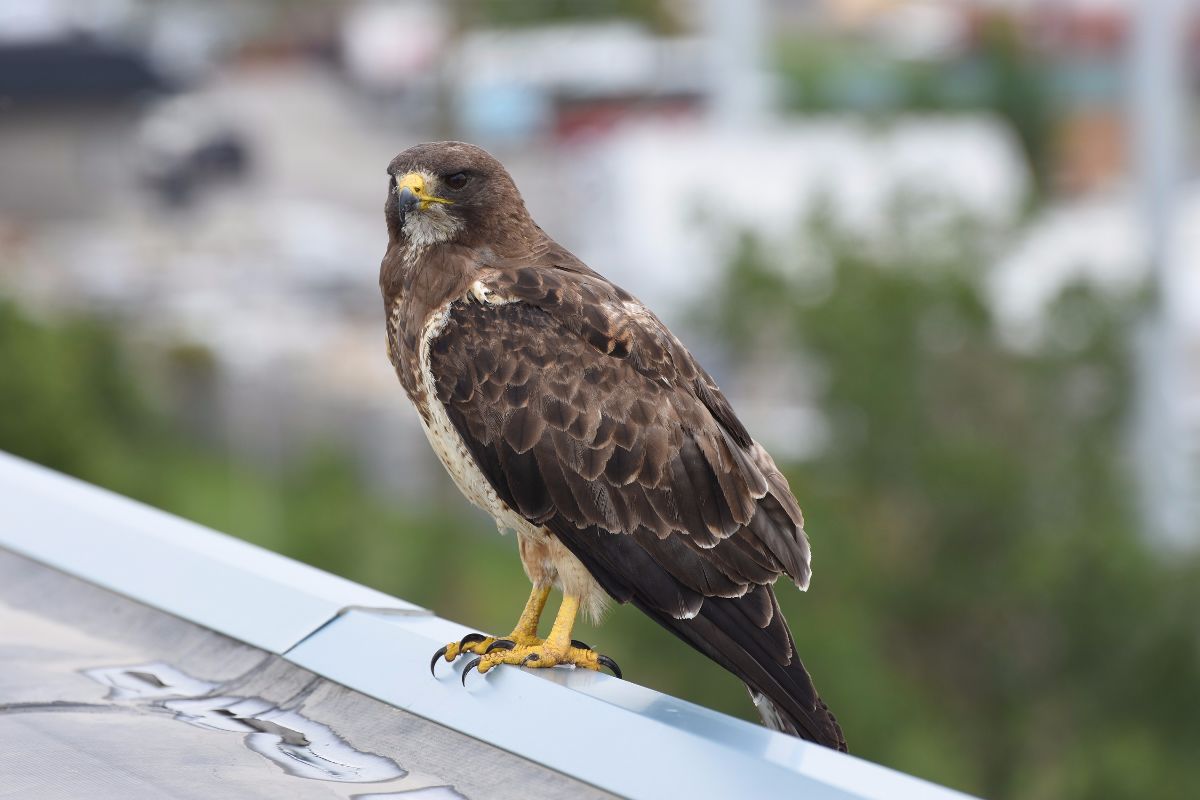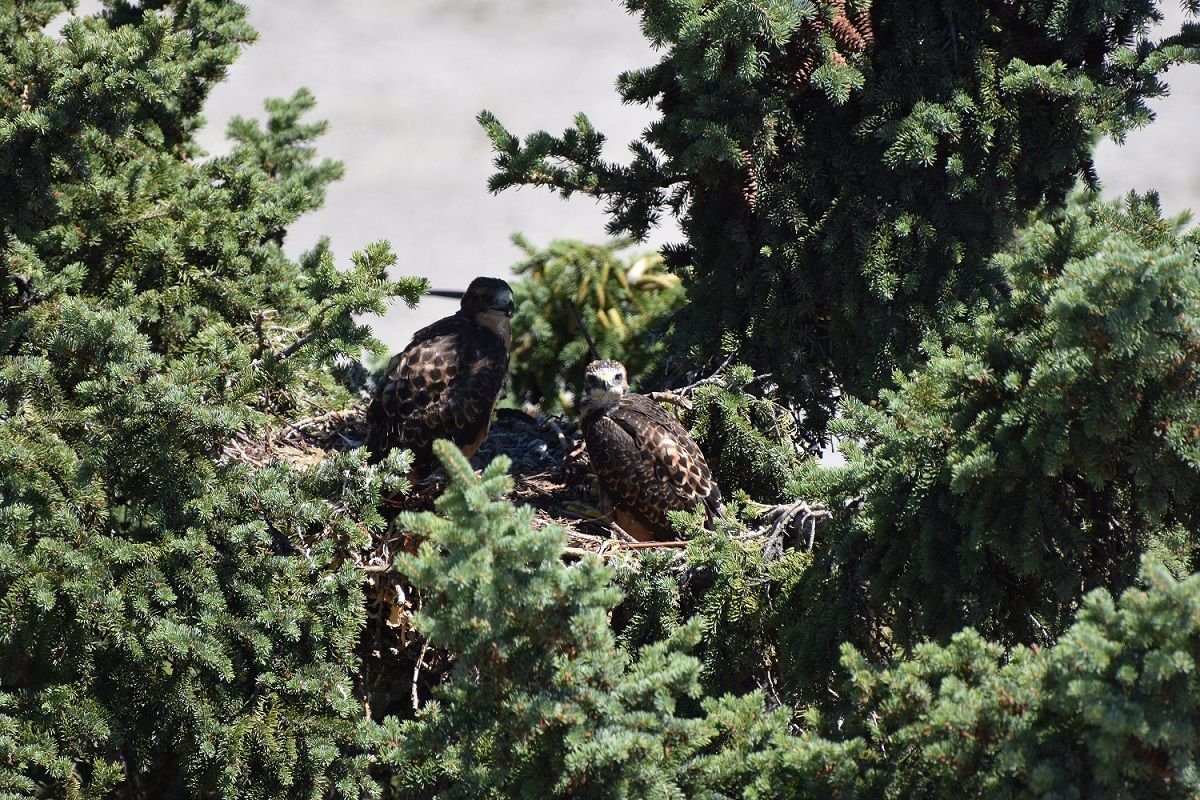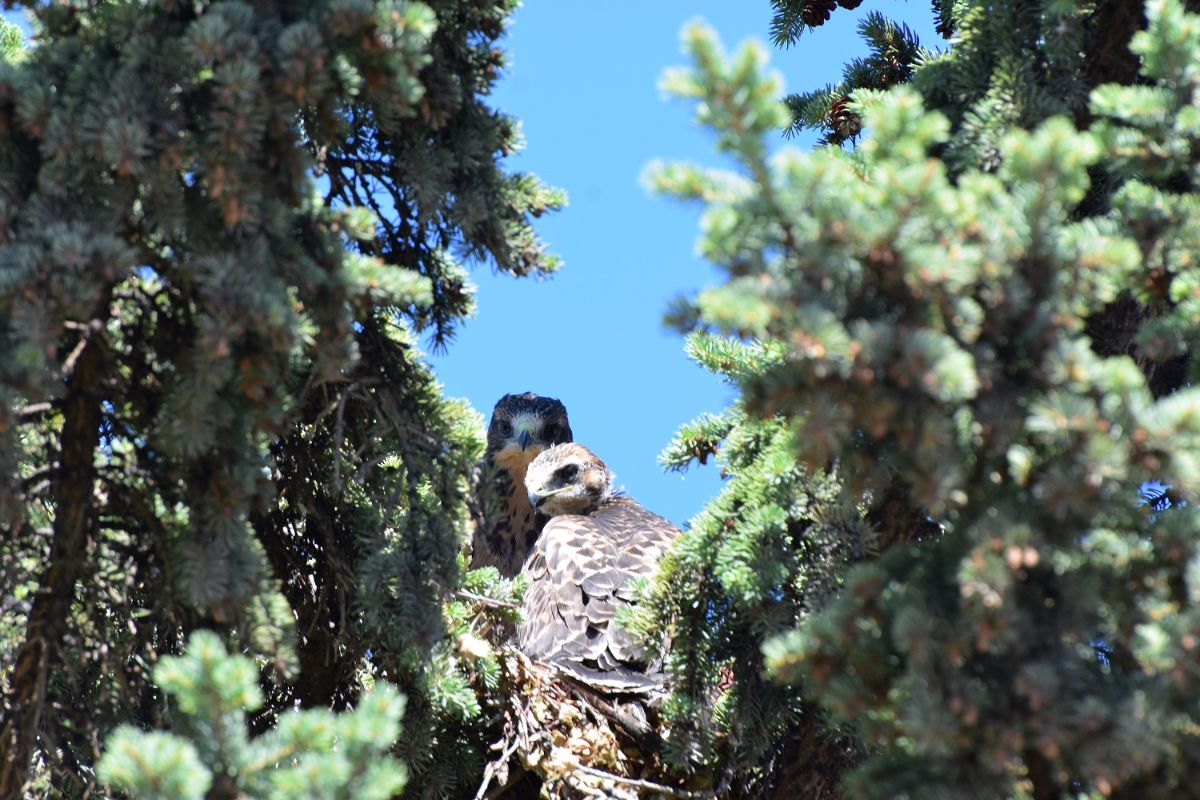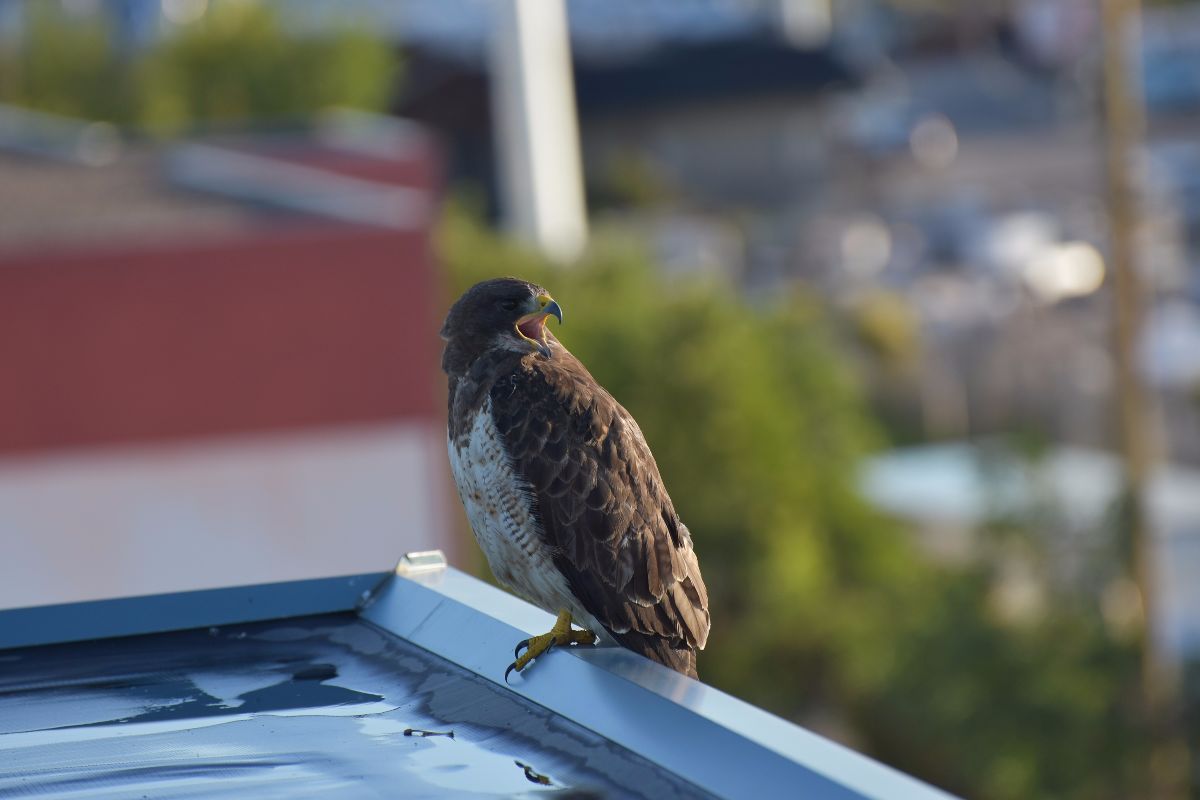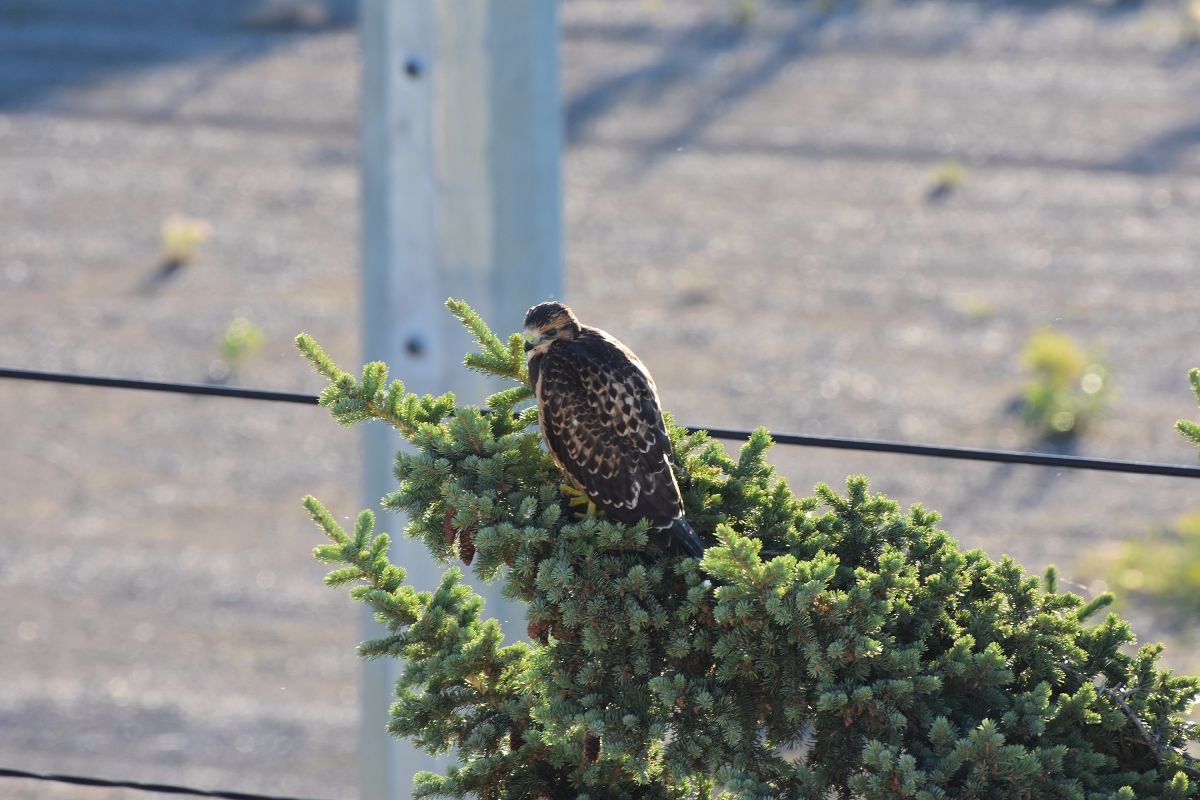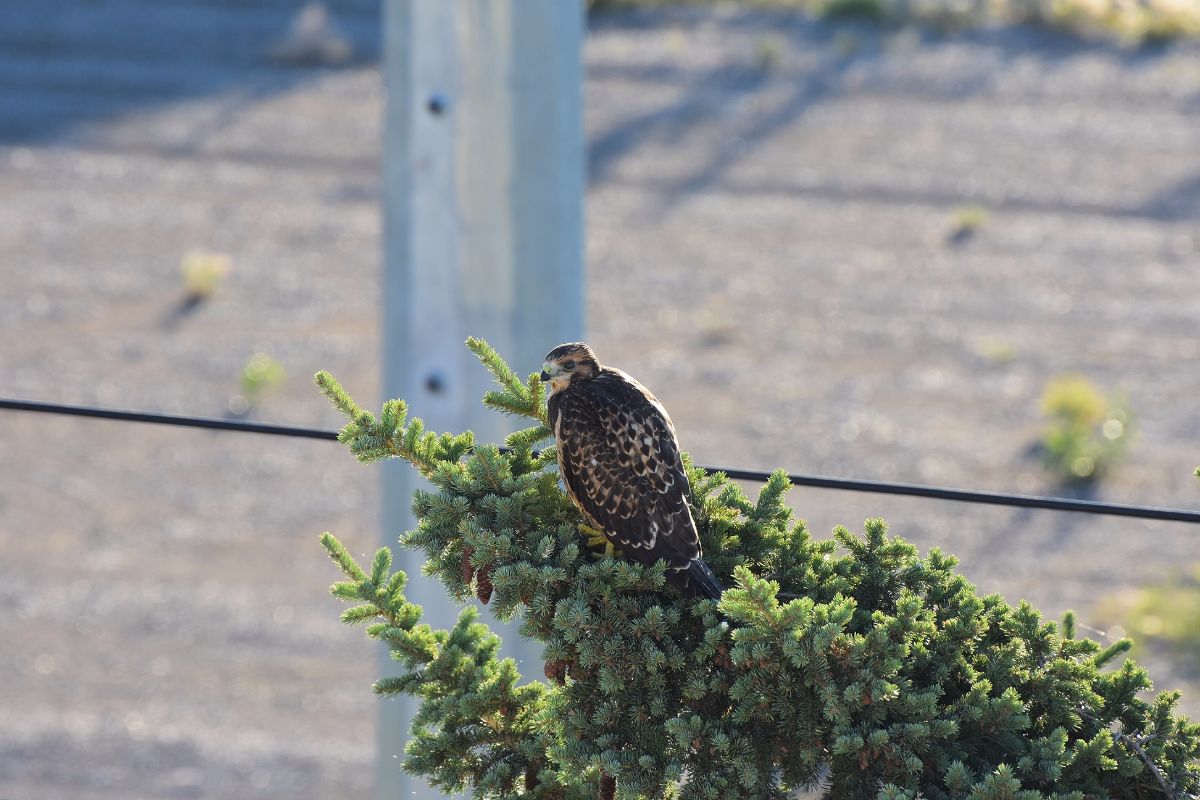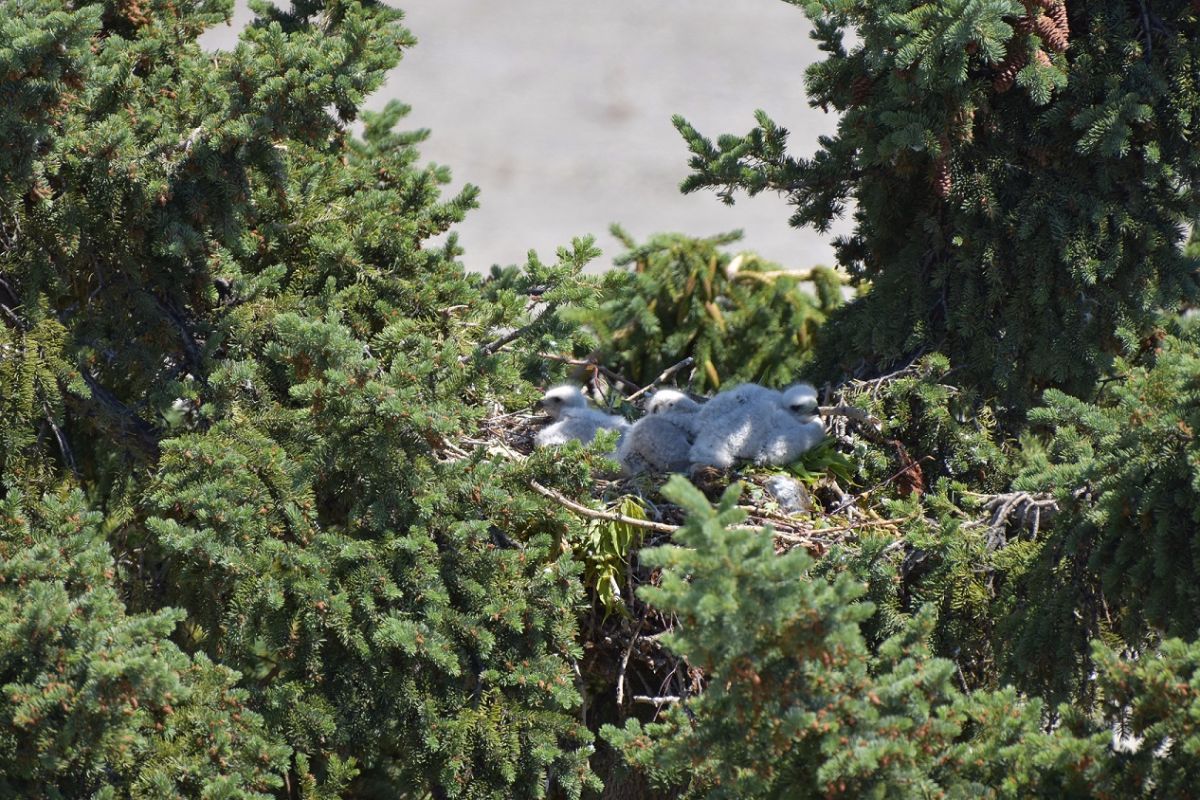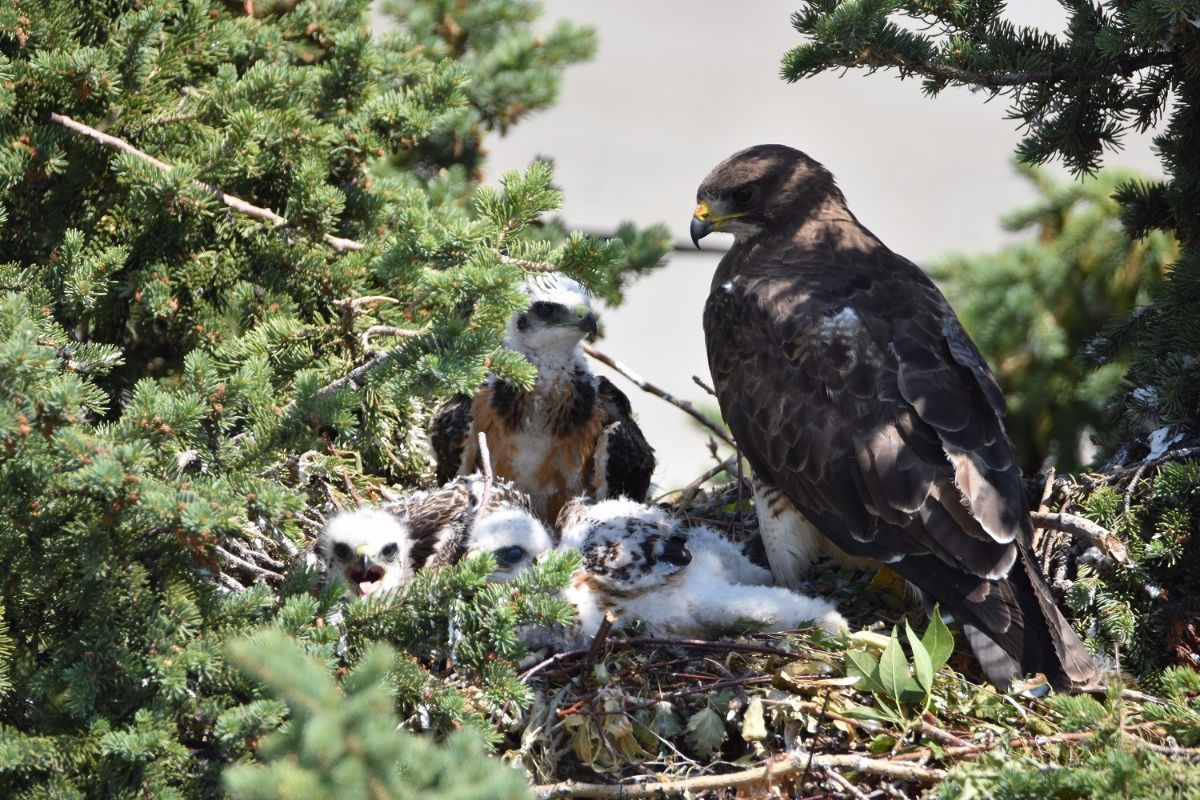By Cathy Warwick

Our sports fans are back in town. There is a pair of Osprey in Calgary’s southwest that have a nest overlooking an athletic centre and parking lot. The hustle and bustle of sports surrounds them and they appear to be used to it. I went and checked them out on a spring morning and watched one eat some fish while perched on top of a pole. As I watched the big bird with my binoculars surveying her territory, she was probably counting the breakfast crumbs on my sweater, her eyesight is that good.
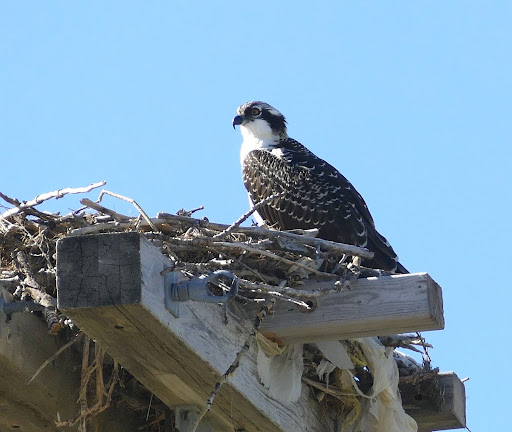
The Osprey is also called a fish hawk because of its strict diet of fish. The pair of Osprey I visited fly over to Sandy Beach and patrol the river. For every hunting trip an Osprey makes it is estimated that they are successful 70% of the time. According to Cornell, the Osprey spends an average of only twelve minutes hunting per trip! Human anglers should take note of their tactics.
They spot a fish and then dive in with their sharp talons, which have a ‘opposable thumb’ type of claw at the back. Their talons also have scales going in a direction that snags the fish onto them. This feature, coupled with their strong grip, means they can be dragged under the water by a larger fish, if they get too greedy. They have also been known to dive under the water to get a fish, then to get out they ‘swim’ with their wings. These skills, coupled with their amazing vision, make them fishing machines. It’s enough to make the average angler throw their little pole and string in the bushes and march off in disgust.
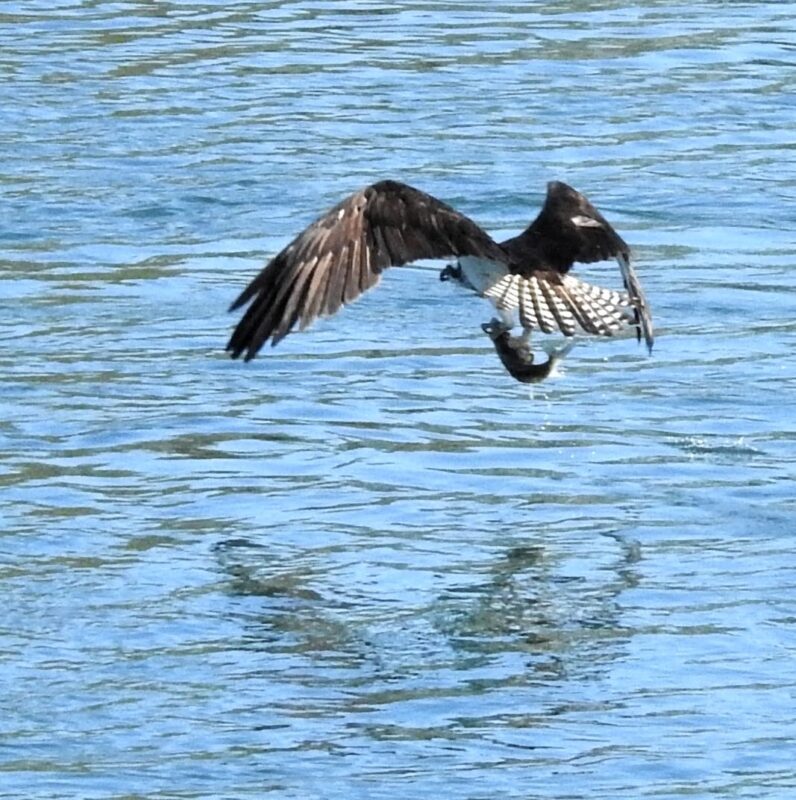
Ospreys are often used to illustrate the effects DDT and PCBs had on our ecosystems, since they are the pinnacle of their food chain. Being at the top, they end up absorbing all the bad stuff in our waterways and DDT causes their eggs to have thin shells. This had catastrophic effects back in the 70’s – Ospreys were actually endangered in some areas. It’s heartening to see how they have rebounded and now have a status of ‘Least Concern’. Ospreys are all over the world, on every continent except Antarctica, and who would want to live there and hang out with a bunch of silly penguins.
During nest building the male Osprey usually gathers the materials and the female arranges it to make a nest. Last year the male had brought his mate a pair of black athletic shorts and they were acting more as a flag, hanging from the bottom. Perhaps from their favourite team? This year it looks like they are making use of a rope and an unidentified piece of cloth. I couldn’t really tell, with all the sticks and extras making up its nest, but it looked like there was no actual nesting platform for this pair. It brings up the question of why the Osprey don’t like the very sturdy nest platforms in Weaslehead. I have never seen an Osprey nest on those ones in all the years they have been there. Perhaps it is about the fishing opportunities down there? Maybe we need to organize some sporting events for them to watch?
Below are some photos of Osprey from another well-known nesting site in the city – the art sculpture on St. Patrick’s Island by the zoo downtown. The photos were taken by Onkar Kadim in summer 2023.
